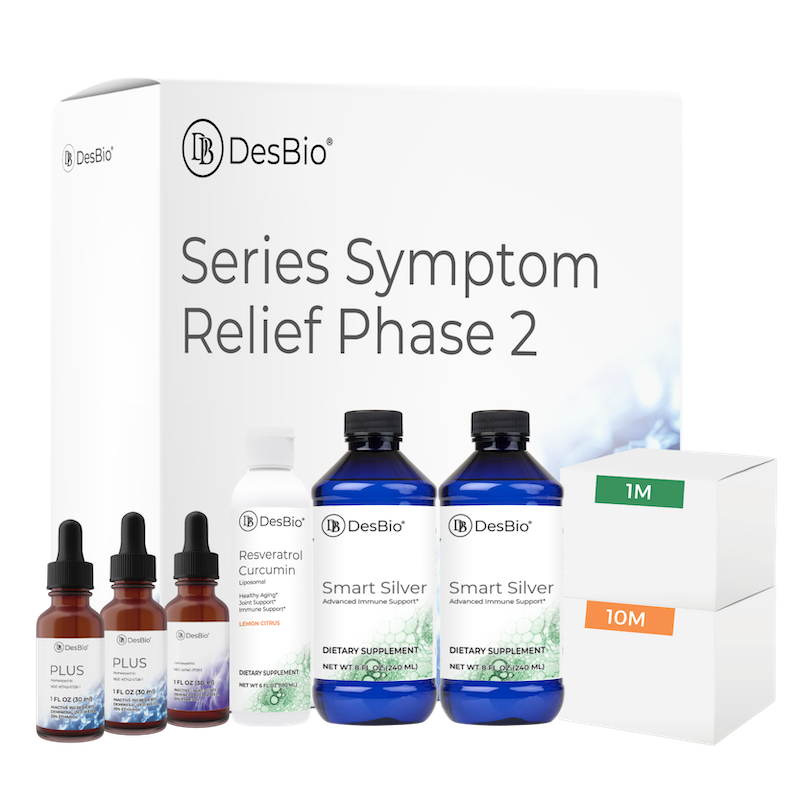MOLD Phase 2 Symptom Relief
Finally - a Mold Protocol That Supports the Body, Mind, and Immune System in One Complete Kit.
- Complete protocol supporting the body's response to three key mold species (Aspergillus, Penicillium, and Stachybotrys) with both organism and DNA energetic signatures.
- Flexible system that supports immune resilience, emotional terrain, and inflammatory balance in one integrated kit suitable for even highly sensitive individuals.
- Supports cognitive clarity and emotional balance in individuals experiencing mold-related brain fog, especially relevant with mold found in 70% of US homes.
In Stock
What's Inside the Mold Phase 2 Kit?

Mold:1M
Homeopathic Indications: For the temporary relief of symptoms including cough, fever, fatigue, and nausea.
- Aspergillus niger (1M) + DNA (1M)
- Penicillium verrucosum (1M) + DNA (1M)
- Stachybotrys chartarum (1M) + DNA (1M)

Mold:10M
Homeopathic Indications: For the temporary relief of symptoms including cough, fever, fatigue, and nausea.
- Aspergillus niger (10M) + DNA (10M)
- Penicillium verrucosum (10M) + DNA (10M)
- Stachybotrys chartarum (10M) + DNA (10M)

Mold Plus (2)
Homeopathic Indications: A 20-ingredient homeopathic formula that provides broad-spectrum mold and terrain support. Continued use in Phase 2 maintains comprehensive coverage while the high-potency remedies work at deeper levels.
- Continues broad-spectrum mold species coverage
- Maintains terrain support during deeper healing
- Helps address lingering co-exposures and sensitivities
- Provides stability while working with higher potencies

PTS/Stress Remedy
Homeopathic Indications: For the temporary relief of symptoms of stress including terror, horror, stress, fight or flight, nightmares, difficulty sleeping, easy irritability, difficulty concentrating, and restlessness.
- Addresses deeper trauma patterns that surface during advanced healing
- Supports nervous system regulation as the body releases stored toxins
- Supports the emotional processing that occurs with high-potency remedies
- Assists the body in reducing fight-or-flight responses that can intensify during detoxification
Many patients experience stored trauma release during Phase 2, making this emotional support essential for protocol completion.

Liposomal Resveratrol Curcumin
Description: Continued antioxidant and anti-inflammatory support remains crucial in Phase 2 as the body works with higher potencies and deeper healing processes.
- Maintains anti-inflammatory pathways during intensified healing
- Continues mycotoxin neutralization support
- Protects cellular integrity during deeper detoxification
- Supports mitochondrial recovery and energy production

Smart Silver 8oz (2)
Description: Continued immune support through Phase 2 helps maintain resilience as the body addresses deeper layers of mold-related challenges.
- Maintains immune vigilance during advanced protocols
- Supports microbial balance as toxins are released
- Helps prevent opportunistic infections during healing crises
- Provides consistent antimicrobial support throughout the journey
Two 8oz bottles ensure adequate supply for the complete Phase 2 protocol duration.
The Hidden Impacts of Mold Exposure
Understanding how mold affects multiple body systems reveals why comprehensive support is essential for recovery:

Cognitive Impairment & Brain Inflammation
Inhaling mold triggers immune activation that spreads inflammatory responses to the brain, causing "brain fog," memory lapses, and difficulty concentrating.

Chronic Inflammation & Neuroimmune Disruption
Even non-toxic mold components activate immune pathways, causing prolonged inflammation affecting cognitive and emotional function.

Neurological & Psychiatric Symptoms
Mold exposure may contribute to emotional disorders and alter neurochemistry, including dopamine release, compounding brain-related symptoms over time.

Respiratory & Immune System Burden
Firmly linked to wheezing, congestion, sinusitis, and hypersensitivity pneumonitis, creating chronic immune activation and heightened allergy risk.

"Sick Building Syndrome" Effect
Occupants in moldy buildings experience headaches, fatigue, eye/nasal irritation, and general malaise—collectively known as Sick Building Syndrome.

Diagnostic & Testing Challenges
Self-reported symptoms and unvalidated tests create risk for misdiagnosis, while methodological flaws cloud understanding of mold's true impact.
These statements have not been evaluated by the Food and Drug Administration. This product is not intended to diagnose, treat, cure, or prevent any disease. Individual results may vary with dietary supplements and homeopathic remedies. For homeopathic products, statements are based upon traditional homeopathic practices.
MOLD Phase 2 Symptom Relief
Finally - a Mold Protocol That Supports the Body, Mind, and Immune System in One Complete Kit.
- Complete protocol supporting the body's response to three key mold species (Aspergillus, Penicillium, and Stachybotrys) with both organism and DNA energetic signatures.
- Flexible system that supports immune resilience, emotional terrain, and inflammatory balance in one integrated kit suitable for even highly sensitive individuals.
- Supports cognitive clarity and emotional balance in individuals experiencing mold-related brain fog, especially relevant with mold found in 70% of US homes.
In Stock
References
Supporting Research on Mold Exposure and Health Impacts


